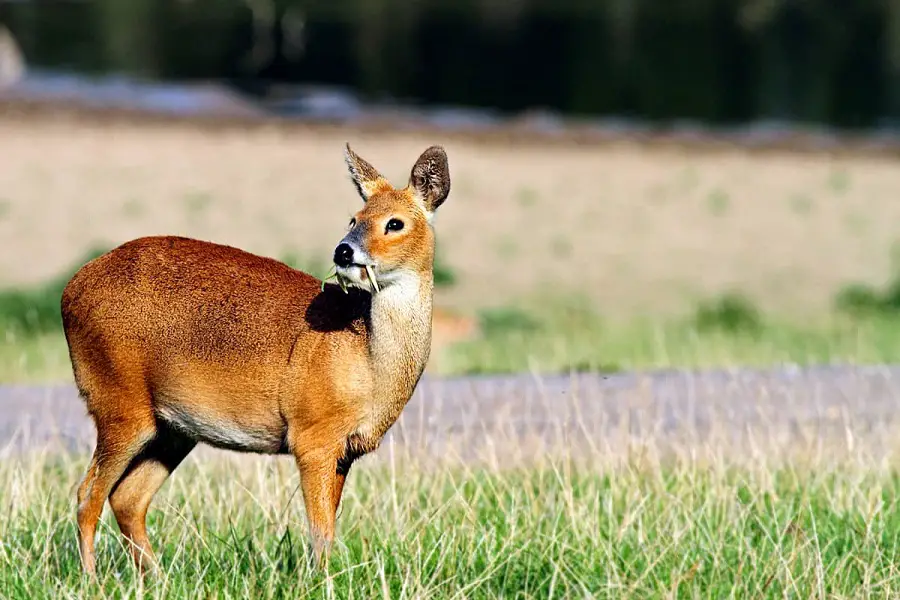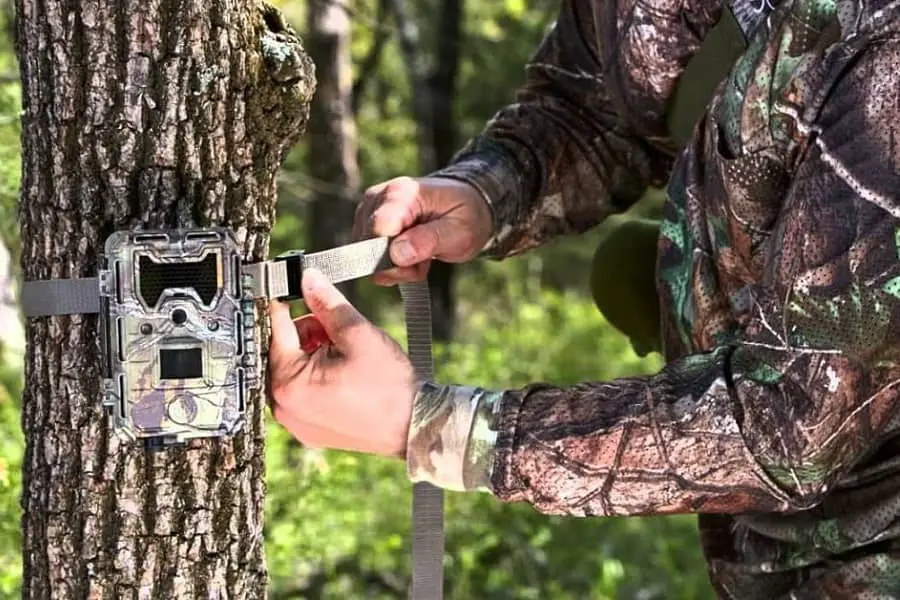Does deer poop look like a typical animal dropping?
It’s not as simple as you may think. While it can be hard to tell the difference between different types of animal droppings, there are some key characteristics that will help you identify when deer have been in your area.
In this blog post we’ll discuss what does deer poop look like and how to recognize it, plus learn about what do they eat and why knowing how to spot their feces is beneficial for outdoor activities such as camping, fishing, or hunting.
What Does Deer Poop Look Like?
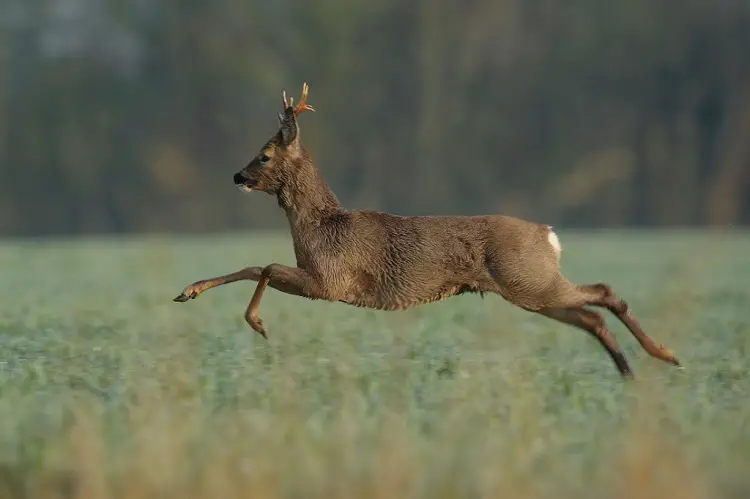
Deer poop is a common sight in the outdoors, but it can be difficult to identify.
Knowing what deer droppings look like and where they are typically found can help you better understand wildlife activity and estimate population size.
You’ll find deer scat mostly near food sources such as fields with crops or patches of trees where acorns drop off branches during autumn months; however, they may also appear along trails frequented by animals for travel purposes.
The frequency depends on how much food is available in their habitat – more food means more frequent visits which leads to higher concentrations of feces around those areas compared to less abundant resources elsewhere nearby.
Color and Shape
Deer droppings are usually dark brown or black in color with a tapered end that resembles an olive pit or grape pip.
They may also have white tips from undigested plant material such as grasses or grains.
Size and Texture
Droppings range from one-half inch to two inches long depending on the age of the animal.
Fresh droppings will be soft while older ones become hard over time due to weathering effects like sun exposure or rain fall.
How to Identify Deer Poop
Deer poop is a useful tool for tracking wildlife activity and understanding the local ecosystem.
It can also be used to estimate population size, making it an important part of outdoor recreation. But before you can take advantage of this valuable resource, you need to know how to identify deer droppings.
By understanding the physical characteristics of deer droppings, you can easily identify them in nature. Knowing what deer eat and their natural diet will help you understand how to attract them to your property for viewing or hunting.
Visual Identification Tips
Deer droppings are usually small pellets that range in color from dark brown to black.
They tend to be uniform in shape and size (about ¼ inch long). You may find them scattered on the ground or grouped together in piles near where deer have been feeding or bedding down.
Distinguishing from Other Animal Droppings
Deer droppings are often confused with other animal droppings such as rabbit, squirrel, raccoon, or fox scat. However, there are some key differences between these types of feces that will help you distinguish one from another.
For example, rabbit scat tends to be larger than deer scat and has a more cylindrical shape while squirrel scat is smaller and rounder than deer scat with visible seeds inside it.
Raccoon poo looks similar but tends to contain berries or other plant material due to its omnivorous diet whereas deer only eat vegetation so their poo won’t contain any food remnants like this.
Foxes produce large pellets that look very different from those left by deer; they tend to be tapered at one end and have a pointed tip at the other end which makes them easy to spot among other animals’ droppings if you know what you’re looking for.
What Do Deer Eat?
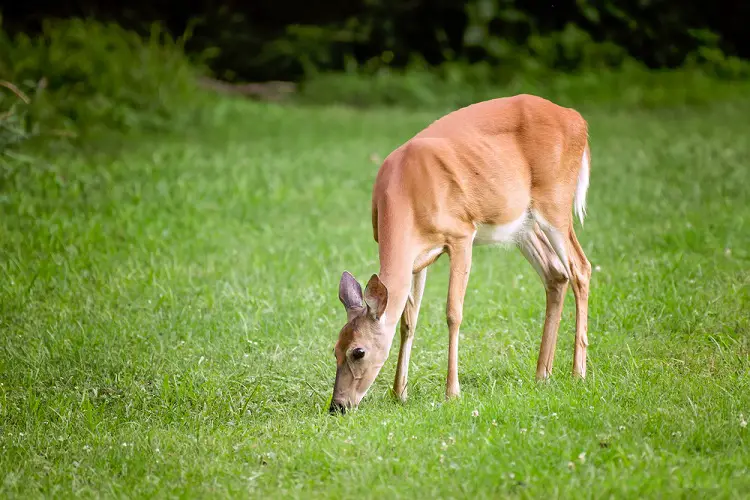
Deer are herbivores, meaning they primarily eat plants. Their natural diet consists of a variety of grasses, shrubs, and other vegetation.
In the wild, deer will forage for food in meadows and woodlands where there is plenty of foliage to choose from.
They also consume fruits and nuts when available.
Natural Diet of Deer
Deer also feed on twigs and buds from trees such as oak or maple; browse on shrubs like rhododendron or mountain laurel; nibble on acorns when available; feast on mushrooms found in moist areas near streams; snack on apples that have fallen off nearby trees; munch on corn if it is growing in nearby fields, and even eat birdseed spilled out by careless humans.
Supplemental Feeding for Deer
In some cases, supplemental feeding may be necessary to help supplement their diets with additional nutrients during certain times throughout the year (such as winter).
This can include providing them with hay bales which contain high amounts of protein needed during cold months when food sources are scarce.
It can also involve putting out grain mixes specifically designed for wildlife consumption which provide essential vitamins and minerals that deer need to stay healthy all year round.
Common Plants That Attract Deer
Knowing what deer eat is important for understanding the ecosystem, tracking wildlife activity, and estimating population size.
With that knowledge in mind, let’s take a look at how to identify deer poop so you can better understand the animals around you.
Benefits of Knowing How to Identify Deer Poop
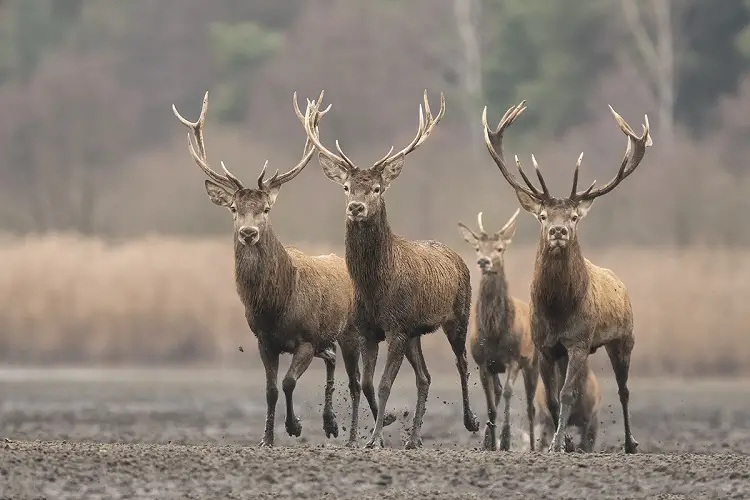
Knowing how to identify deer poop can be a valuable skill for anyone who enjoys the outdoors.
It can help you track wildlife activity, understand the ecosystem, and estimate population size.
Tracking Wildlife Activity
Deer droppings are one of the most reliable indicators of where animals have been in an area.
By learning what deer poop looks like, you’ll be able to tell if there is a lot of activity or not in your favorite outdoor spot.
You may even find yourself able to distinguish between different species by their droppings.
Understanding the Ecosystem
Being able to recognize deer scat will also give you insight into what other creatures live in that particular environment.
Different types of plants often grow near certain animal habitats, so being familiar with deer poo can help you determine which plants are native and which ones were introduced by humans.
Additionally, knowing how much scat is present can provide clues about food sources available for other species living nearby as well as any potential predators that might be lurking around.
Estimating Population Size
The amount and type of droppings left behind by a herd or individual animal can give you an idea about its size and health status too.
If there’s more than usual then it could mean that the population has grown recently; on the other hand, if there’s less than expected then it could indicate a decrease in numbers due to predation or disease outbreaks within that group.
This information is invaluable when trying to manage wildlife populations responsibly over time.
Cleaning Up After Deer Poop
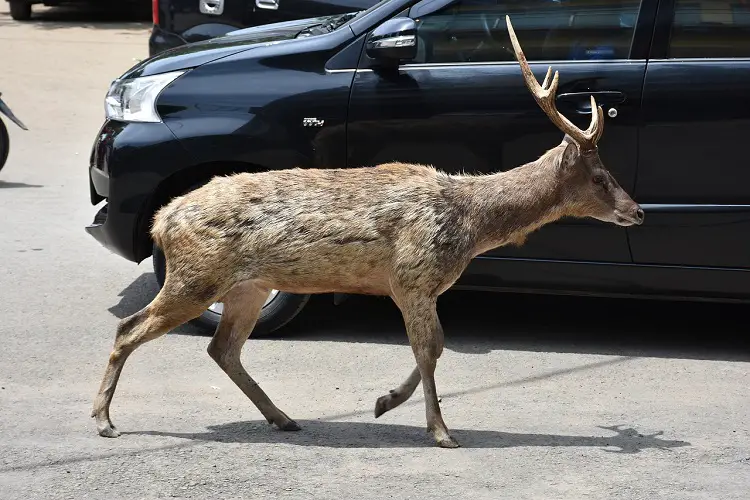
When it comes to cleaning up after deer poop, safety should always be your top priority. It’s important to wear gloves and a face mask when handling droppings as they may contain bacteria or parasites that can cause illness in humans.
If you come across large piles of droppings, use a shovel to scoop them into plastic bags for disposal. Make sure the bags are securely sealed before disposing of them in an appropriate location such as a trash receptacle or designated dumpster.
Disposal methods vary depending on where you are located and what type of environment you’re in. In some areas, it is legal to bury deer droppings at least 8 inches deep away from water sources and trails used by people or animals.
However, if burying isn’t an option, then burning is another method that can be used for disposal; however this should only be done with extreme caution due to the risk of starting wildfires.
Preventative measures can also help reduce the amount of deer poop left behind on your property or campsite.
Consider installing motion-activated lights around the perimeter which will scare off any potential wildlife visitors looking for food scraps or other attractants near your home or campsite.
Keeping all garbage bins tightly sealed and removing any bird feeders will discourage wild animals from entering your area in search of food sources.
FAQs

How can you tell rabbit poop from deer poop?
Rabbit poop is typically smaller and rounder than deer droppings. Rabbit droppings are usually dark in color, while deer droppings tend to be lighter brown or tan. The shape of rabbit scat can vary from round pellets to oblong shapes with pointed ends.
Deer scat is more tubular in shape and may contain bits of undigested vegetation like grasses or twigs. Additionally, the size of rabbit poop tends to be much smaller than that of a deer’s; about 1/4 inch compared to 3/4 inch for a white-tailed deer.
How big is deer scat?
Deer scat varies in size depending on the species of deer. Generally, white-tailed deer droppings are about 1/4 to 3/4 inches in diameter and up to 2 inches long.
Mule deer droppings tend to be a bit larger, ranging from 1/2 inch to 1 inch in diameter and up to 4 inches long. The shape of the scat also varies between species; white-tailed deer droppings are usually cylindrical while mule deer scat is more often pellet shaped.
What does fox poop look like?
Fox poop is typically dark in color and can range from 1 to 2 inches long. It often has a pointed end, and the shape may be slightly curved or twisted. The consistency of fox droppings varies depending on what they have been eating, but it is usually quite dry and crumbly.
Foxes are omnivores so their scat may contain bits of fur, feathers, bones, insects or plant material. Foxes also tend to bury their feces which helps keep their environment clean.
WHAT ELSE LOOKS LIKE DEER SCAT?
Rabbit scat is often mistaken for deer scat due to its similar size and shape. Rabbit droppings are usually smaller, darker, and more cylindrical than deer droppings. They also tend to be found in clusters rather than scattered around like deer droppings.
Squirrel scat can also look similar to that of a deer but tends to be much smaller with a pointed end and may contain bits of nuts or other food items. Fox scat is larger than rabbit or squirrel but still significantly smaller than that of a deer, typically having an oval shape with tapered ends.
Conclusion
Whether you’re hunting, camping, fishing or hiking, being able to identify deer droppings can help you stay safe and clean up after yourself.
It’s also important to know what deer eat so that you can better understand their behavior and habits while in nature.
With these tips in mind, your next outdoor adventure should be an enjoyable one!
Resources:


